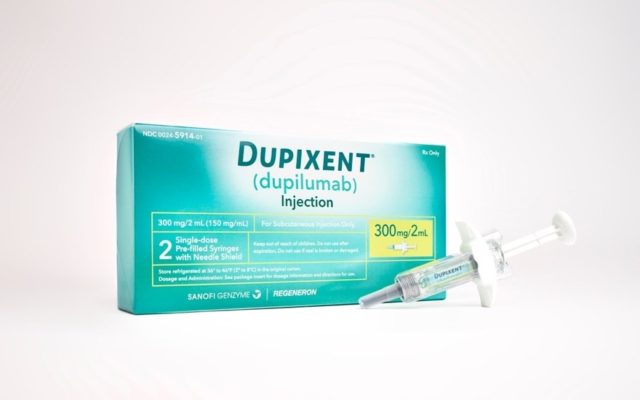
Sanofi’s Dupixent is already off and running in several key markets—including eczema and adult asthma—and churning up blockbuster sales. Now, with a potential FDA approval in childhood asthma forthcoming, Sanofi is touting new data that could make the medicine a “best-in-class” treatment for those patients.
In a phase 3 trial called Voyage, Dupixent plus standard-of-care asthma therapy significantly cut asthma attacks at Week 24 and improved lung function within two weeks in children ages 6 to 11 with moderate-to-severe asthma, compared with standard care.
The FDA is already reviewing the data, with a decision expected in October, and Sanofi rolled out top-line results last fall. But the now-public details, presented Monday at the virtual American Thoracic Society meeting, offer a better idea of how Dupixent might fare in the pediatric asthma field.
Dupixent is the first biologic that has “really impacted lung functions” in the patient population, Sanofi’s Naimish Patel, therapeutic area head of immunology and inflammation, said in an interview. Sanofi believes the drug could be a “best-in-class” option for patients; no other biologic has been able to show “that type of improvement in lung function,” Patel said.
An approval for pediatric asthma would help boost Dupixent’s already considerable momentum. The company predicts the drug, first approved in eczema, can become one of the industry’s top blockbusters with peak sales of €10 billion a year. Last year, Dupixent brought in more than $4 billion worldwide.
But the company could find itself against some next-gen competition. Amgen and AstraZeneca recently submitted their asthma candidate tezepelumab to the FDA. While data on that drug are in adults so far, the partners are also running a study in children.
RELATED: Dupixent sales of €10B? We’re on track, Sanofi CEO Hudson says
That fact makes the details of Voyage even more important. Investigators tested the drug in 408 children, dividing them into two groups, each with different markers of type 2 asthma. The Dupixent patients saw an improvement in asthma control at Week 24 as measured on a 0 to 6 scale of symptom severity and disease impact, Sanofi said.
The two groups of Dupixent patients reported score improvements of 1.33 and 1.44 on the scale, respectively, compared with 0.88 and 1.00 for those on placebo. The improvement for patients on Dupixent more than doubled the “clinically meaningful threshold of 0.5 points,” Sanofi said.
Asthma is the most common chronic disease in children, Patel said. It’s a leading cause of hospitalization among children and has become increasingly prevalent over time. Children with severe asthma often end up missing school after exacerbations, and their grades suffer. Plus, asthma often makes children avoid physical activity, which comes with other health consequences.
Young asthma patients often do not develop fully healthy lungs when they become adults, Patel said, and treatment with high levels of steroids can also stunt growth.
In the long run, Sanofi wants to investigate whether treatment with Dupixent in pediatric patients with atopic dermatitis or asthma changes the long-term course of their disease. Sanofi plans to track patients over a period of years to determine whether it does.






